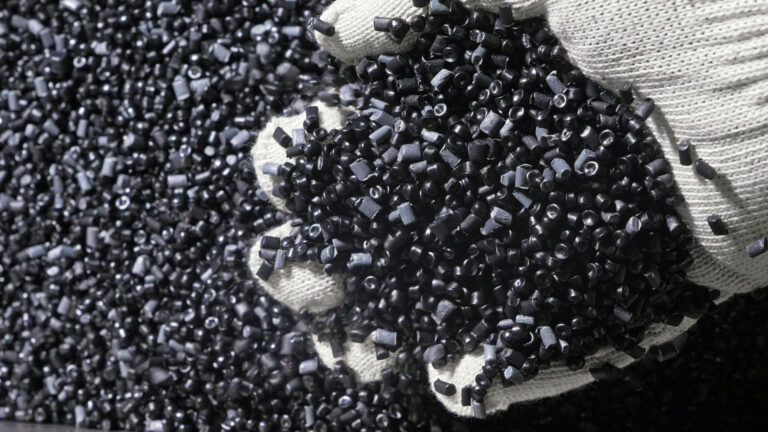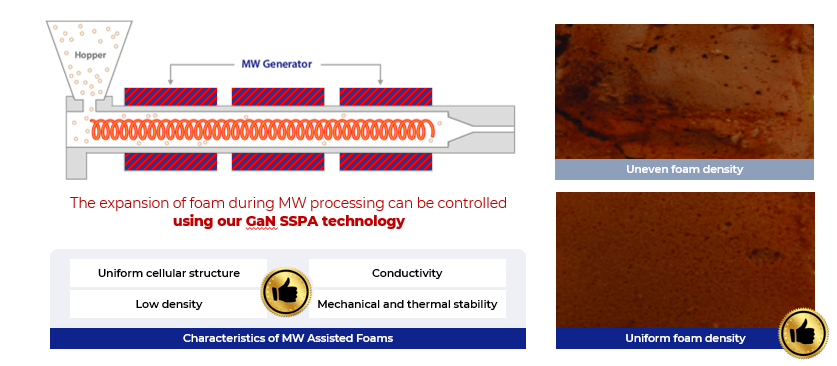
Customer Background
Our customer is an integrated and innovative solution provider of plastic resin & synthetic fiber manufacturing. This corporation has over 300 employees and generates more than $200 million in annual sales (USD). The customer is a global leader in manufacturing a foam-type thermosetting resin with a unique open-cell structure that provides excellent sound absorption, insulation, and durability.
The customer was already using multiple machines for manufacturing their products, including a long conveyor tunnel equipped with multiple magnetrons to foam and expand their thermosetting resin material used for construction, transportation, and industrial applications.
Customer Pain Points
The melamine foam has a unique three-dimensional hexagonal reticular structure providing an open-cell foam, unlike many other conventional polymeric foams. It is mainly known for its excellent sound absorption and fire resistance properties making it useful for various industrial applications.
The manufacturing process consisted of three main microwave heating sections:
- Foaming: The mixed resin is heated at a high temperature creating a chemical reaction causing the resin to expand.
- First Conditioning: Heat it at a different temperature to release trapped air bubbles and gasses from the expanded resin.
- Second Conditioning: Final heat treatment before the foam is cooled.

The customer was having difficulty expanding the melamine foam and heating it uniformly. The foam would heat the exterior more than the interior with its current solution, creating an uneven cellular structure. This problem led to longer processing times, and overall uneven-quality foam.
The customers were looking for a solution to expand and heat the melamine foam more uniformly and quickly. We believed our GaN solid-state industrial microwave solutions would be great for them to heat the melamine foam more uniformly while shortening processing times.
Proposed Solution
RFHIC offered our compact 3kW, GaN solid-state industrial microwave generator solution to replace their current magnetron technology. Doing so allowed them to test and see which frequency, power level, and signal source worked best for each section, allowing them to create the perfect “recipe.”
Having the customer integrate our 3kW, Industrial Microwave generator system allowed them to save tremendous costs from the following:
Due to the built-in internal waveguide, our customer could get rid of bulky, long, and expensive external waveguides. This allowed them to directly attach our microwave generators to their current system allowing for better heat distribution and simplified system integration.
- Minimized their Current Floor Space
- RFHIC’s 3kW solution allowed them to automate their processing line through its digital software – enabling growth in productivity
- The Real-time monitoring capability allowed for optimized end products
For more information, don't hesitate to get in touch with us here: Contact Us

